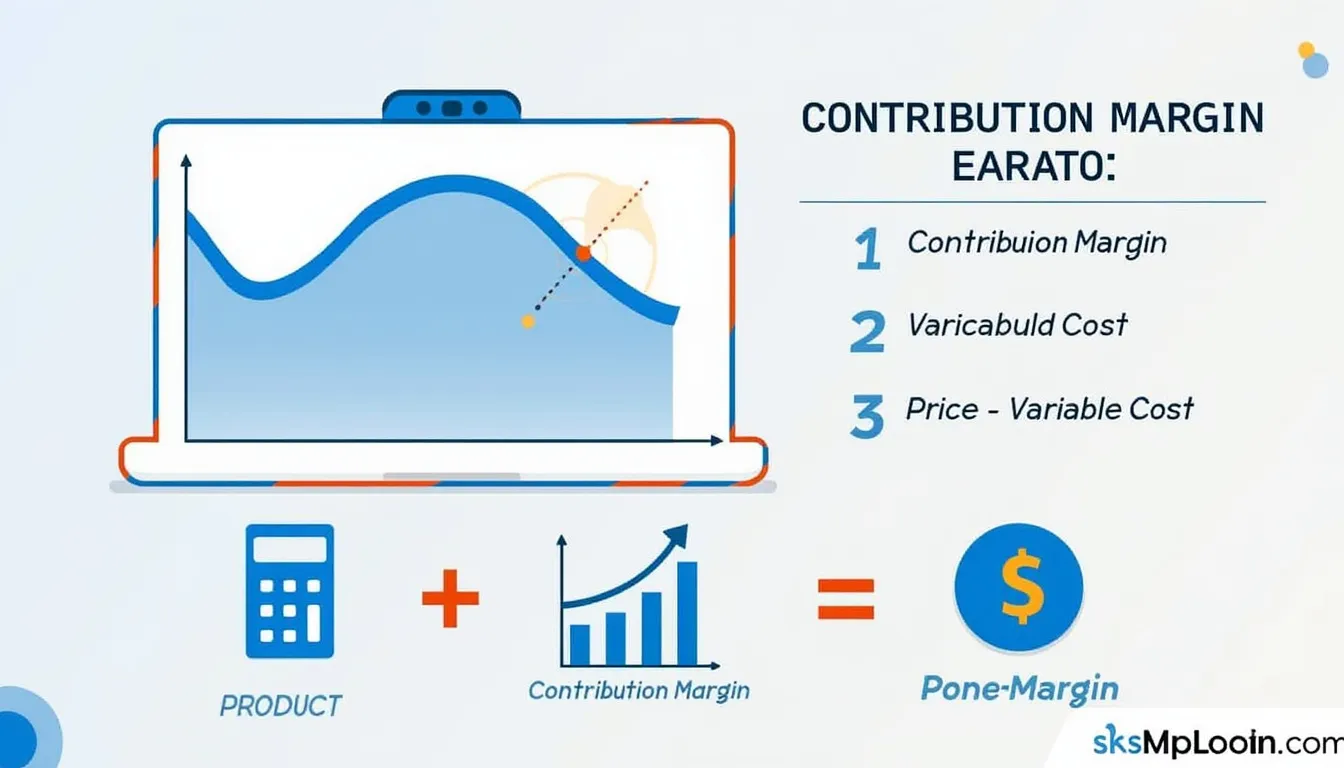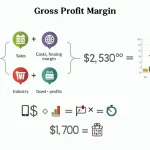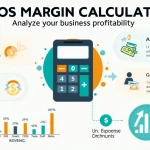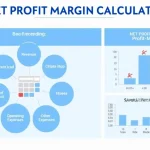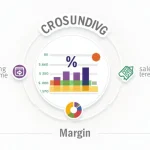Contribution Margin Calculator
Is this tool helpful?
How to Use the Contribution Margin Calculator Effectively
The Contribution Margin Calculator is a powerful tool designed to help businesses and financial analysts quickly determine the profitability of individual products or services. To use this calculator effectively, follow these simple steps:
- Enter the Price Per Product in the first input field. This should be the selling price of a single unit of your product or service.
- Input the Variable Cost Per Product in the second field. This includes all costs that change directly with the production or sale of each unit.
- Click the “Calculate” button to generate your result.
- The calculator will display the Contribution Margin, which represents the amount each unit contributes to covering fixed costs and generating profit.
For optimal results, ensure you’re using accurate and up-to-date figures for both price and variable costs. Regular use of this calculator can provide valuable insights into your product pricing strategy and overall financial health.
Understanding Contribution Margin: Definition, Purpose, and Benefits
Contribution margin is a crucial financial metric that measures the profitability of individual products or services. It’s calculated by subtracting the variable costs associated with producing a product from its selling price. The resulting figure represents the amount each unit “contributes” to covering fixed costs and, ultimately, to the company’s profit.
The formula for contribution margin is:
The purpose of calculating contribution margin is multifaceted:
- It helps businesses understand which products are most profitable.
- It aids in making informed decisions about product mix and pricing strategies.
- It provides insights into break-even analysis and profit planning.
- It assists in evaluating the financial impact of changes in sales volume.
By regularly using a contribution margin calculator, businesses can gain a clearer picture of their financial performance at the product level, enabling more strategic decision-making and improved profitability.
Key Benefits of Using the Contribution Margin Calculator
Incorporating the Contribution Margin Calculator into your financial analysis toolkit offers numerous benefits:
1. Time-Saving Efficiency
Manual calculations can be time-consuming and prone to errors. This calculator automates the process, providing instant, accurate results and freeing up valuable time for analysis and decision-making.
2. Improved Decision-Making
With quick access to contribution margin data, you can make more informed choices about product pricing, resource allocation, and marketing strategies.
3. Enhanced Profitability Analysis
Regularly calculating contribution margins allows you to identify your most profitable products or services, helping you optimize your product mix for maximum profitability.
4. Break-Even Analysis Support
Contribution margin is a key component in break-even analysis. This calculator facilitates easier and more frequent break-even calculations, helping you understand how many units you need to sell to cover your fixed costs.
5. Pricing Strategy Optimization
By understanding the contribution margin of each product, you can fine-tune your pricing strategies to maximize overall profitability while remaining competitive in the market.
6. Scalability Planning
The calculator helps you assess the financial impact of scaling your business by showing how changes in sales volume affect your contribution to fixed costs and profits.
Addressing User Needs and Solving Specific Problems
The Contribution Margin Calculator addresses several critical needs for businesses and financial analysts:
Rapid Financial Analysis
In today’s fast-paced business environment, quick decision-making is crucial. This calculator provides instant results, allowing users to perform rapid financial analyses and respond swiftly to market changes or internal challenges.
Product Line Optimization
By easily comparing contribution margins across different products, businesses can identify which items are most profitable and make informed decisions about which products to focus on or potentially discontinue.
Pricing Strategy Refinement
The calculator helps solve the common problem of determining optimal pricing. Users can quickly test different price points and see how they impact the contribution margin, facilitating more strategic pricing decisions.
Cost Management
By highlighting the relationship between price and variable costs, the calculator helps businesses identify areas where cost reduction efforts could have the most significant impact on profitability.
Sales Target Setting
Understanding contribution margins allows businesses to set more realistic and achievable sales targets. The calculator helps solve the problem of arbitrary goal-setting by providing a data-driven approach to target determination.
Investment Decision Support
When considering new product lines or expansion opportunities, the contribution margin calculator can provide valuable insights into the potential profitability of these ventures, supporting more informed investment decisions.
Practical Applications and Use Cases
The Contribution Margin Calculator has a wide range of practical applications across various industries and business scenarios. Here are some illustrative use cases:
Retail Product Analysis
A clothing retailer uses the calculator to compare the contribution margins of different apparel items. They find that while t-shirts have a lower price point, their higher margin makes them more profitable than higher-priced items like jackets. This insight leads to a reorganization of store layouts and marketing efforts to emphasize t-shirt sales.
Manufacturing Process Evaluation
A furniture manufacturer uses the calculator to assess the profitability of different production methods for a new line of chairs. By comparing the contribution margins of handcrafted versus machine-produced chairs, they can make an informed decision about which production method to adopt.
Service Industry Pricing
A consulting firm uses the calculator to determine optimal hourly rates for their services. By inputting different price points and variable costs (such as consultant wages), they can find the rate that provides the best contribution margin while remaining competitive in the market.
Restaurant Menu Engineering
A restaurant owner uses the calculator to analyze the profitability of each dish on their menu. This analysis reveals that some popular items have low contribution margins. Armed with this information, they can adjust recipes, pricing, or portion sizes to improve profitability without alienating customers.
Software as a Service (SaaS) Pricing Tiers
A SaaS company uses the calculator to evaluate different pricing tiers for their subscription service. By comparing the contribution margins of various price points and feature sets, they can design a tiered pricing structure that maximizes profitability while catering to different customer segments.
Event Planning Profitability
An event planning company uses the calculator to determine the profitability of different types of events. By calculating the contribution margin for weddings, corporate events, and birthday parties, they can focus their marketing efforts on the most profitable event types and adjust pricing for less profitable ones.
Frequently Asked Questions (FAQ)
Q1: What is a good contribution margin?
A: There’s no universal “good” contribution margin as it varies by industry and business model. Generally, a higher contribution margin is better, but it’s essential to compare your margin to industry benchmarks and your historical performance.
Q2: How is contribution margin different from gross profit?
A: While both measure profitability, contribution margin only considers variable costs, whereas gross profit includes all costs of goods sold, which may include some fixed costs.
Q3: Can contribution margin be negative?
A: Yes, contribution margin can be negative if the variable costs exceed the selling price. This situation is usually unsustainable and indicates that the product is losing money on each sale.
Q4: How often should I calculate contribution margin?
A: It’s beneficial to calculate contribution margin regularly, ideally monthly or quarterly, and whenever there are significant changes in pricing or costs.
Q5: Can I use this calculator for service-based businesses?
A: Absolutely. For services, consider the price as your service fee and the variable costs as the direct costs associated with providing the service.
Q6: How does contribution margin relate to break-even analysis?
A: Contribution margin is a key component in break-even analysis. The break-even point is calculated by dividing fixed costs by the contribution margin per unit.
Q7: Is a high contribution margin always better?
A: While a high contribution margin is generally desirable, it’s not always the best strategy. Sometimes, a lower margin with higher sales volume can lead to greater overall profitability.
Q8: How can I improve my contribution margin?
A: You can improve contribution margin by increasing prices, reducing variable costs, or a combination of both. However, these changes should be made carefully to avoid negatively impacting sales volume.
Note: We cannot guarantee that the webtool or results from our webtool are always correct, complete, or reliable. Our content and tools might have mistakes, biases, or inconsistencies.
Conclusion: Harnessing the Power of Contribution Margin Analysis
The Contribution Margin Calculator is an invaluable tool for businesses seeking to optimize their financial performance and make data-driven decisions. By providing quick and accurate calculations of contribution margins, this tool empowers users to:
- Identify their most profitable products or services
- Refine pricing strategies for maximum profitability
- Make informed decisions about product mix and resource allocation
- Conduct more accurate break-even analyses
- Respond swiftly to market changes and internal challenges
Regular use of this calculator can lead to improved financial health, more strategic decision-making, and ultimately, increased profitability. Whether you’re a small business owner, a financial analyst, or a corporate executive, incorporating contribution margin analysis into your financial toolkit is a step towards more informed and successful business operations.
Take control of your financial future today. Start using the Contribution Margin Calculator to unlock valuable insights about your business and drive your success forward. Remember, in the world of business, knowledge is power – and the power to understand and optimize your contribution margins is just a click away.
Important Disclaimer
The calculations, results, and content provided by our tools are not guaranteed to be accurate, complete, or reliable. Users are responsible for verifying and interpreting the results. Our content and tools may contain errors, biases, or inconsistencies. We reserve the right to save inputs and outputs from our tools for the purposes of error debugging, bias identification, and performance improvement. External companies providing AI models used in our tools may also save and process data in accordance with their own policies. By using our tools, you consent to this data collection and processing. We reserve the right to limit the usage of our tools based on current usability factors. By using our tools, you acknowledge that you have read, understood, and agreed to this disclaimer. You accept the inherent risks and limitations associated with the use of our tools and services.
